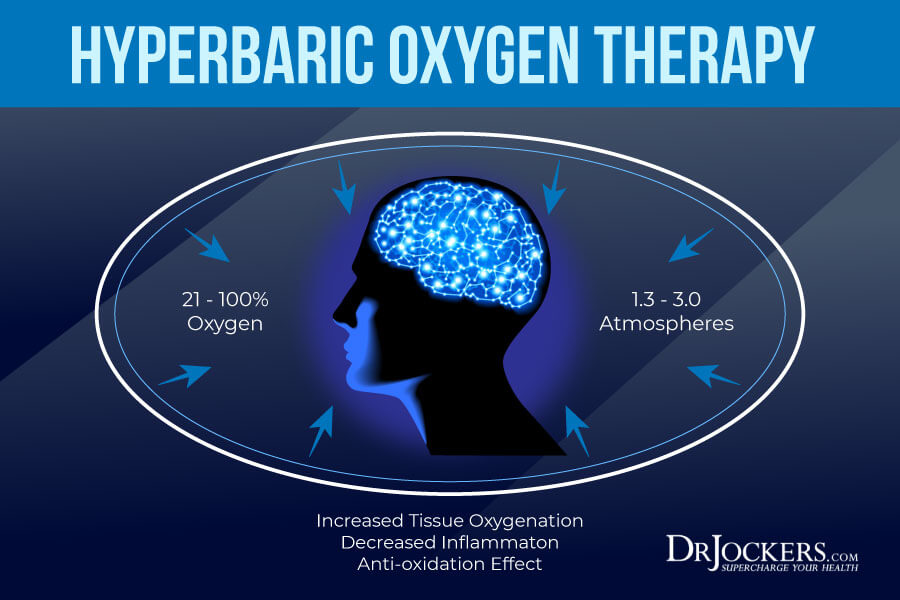Benefits of Hyperbaric Oxygen Therapy
Hyperbaric Oxygen Therapy (HBOT) is a medical treatment that involves breathing pure oxygen in a pressurized chamber. It has gained popularity in recent years due to its potential benefits for various health conditions. In this article, we will explore the numerous advantages of hyperbaric oxygen therapy and how it can improve your overall well-being.
Enhanced Oxygen Supply to Tissues
One of the primary benefits of hyperbaric oxygen therapy is its ability to increase the supply of oxygen to body tissues. By breathing in pure oxygen under increased pressure, the oxygen dissolves in the blood plasma and reaches areas with compromised blood flow. This helps in enhancing the oxygenation of tissues, promoting healing, and reducing the risk of infections.
Accelerated Wound Healing
HBOT has shown remarkable results in accelerating wound healing. The increased oxygen levels in the body stimulate the production of collagen and new blood vessels, which are essential for tissue repair. This therapy is particularly beneficial for individuals with non-healing wounds, diabetic ulcers, and radiation injuries.
Reduced Inflammation
Hyperbaric oxygen therapy has anti-inflammatory effects on the body. It helps in reducing inflammation by suppressing pro-inflammatory cytokines and increasing the production of anti-inflammatory substances. This can be beneficial for individuals with chronic inflammatory conditions such as arthritis, Crohn’s disease, and multiple sclerosis.
Improved Brain Function
HBOT has shown promising results in improving brain function and cognitive abilities. The increased oxygen supply to the brain enhances neuronal activity, promotes neuroplasticity, and improves overall brain health. This therapy has been used successfully in the treatment of traumatic brain injuries, stroke, and neurodegenerative disorders.
Enhanced Sports Performance and Recovery
Athletes and fitness enthusiasts can benefit from hyperbaric oxygen therapy to enhance their performance and speed up recovery. The increased oxygen levels in the body help reduce muscle fatigue, promote faster recovery from intense workouts, and improve athletic endurance. Many professional athletes incorporate HBOT into their training regimen to gain a competitive edge.
Relief from Chronic Fatigue Syndrome
Chronic Fatigue Syndrome (CFS) is a debilitating condition characterized by extreme fatigue and exhaustion. Hyperbaric oxygen therapy has shown promising results in alleviating the symptoms of CFS by increasing energy levels, reducing inflammation, and promoting better sleep. It can significantly improve the quality of life for individuals suffering from this condition.
Enhanced Immune System Function
HBOT has immune-modulating effects that can enhance the body’s natural defense mechanisms. It stimulates the production of white blood cells, enhances the efficiency of the immune system, and helps in fighting off infections. This therapy can be particularly beneficial for individuals with compromised immune systems or those undergoing cancer treatments.

Hyperbaric Oxygen Therapy offers a wide range of benefits for various health conditions. By increasing oxygen supply to tissues, accelerating wound healing, reducing inflammation, improving brain function, enhancing sports performance, relieving chronic fatigue, and boosting the immune system, HBOT can significantly improve your overall well-being. Consult with a healthcare professional to determine if hyperbaric oxygen therapy is suitable for your specific needs.
Frequently Asked Questions
1. What is hyperbaric oxygen therapy (HBOT)?
Hyperbaric oxygen therapy is a medical treatment that involves breathing pure oxygen in a pressurized chamber, which increases the amount of oxygen in the bloodstream.
2. How does hyperbaric oxygen therapy work?
During HBOT, the increased pressure allows oxygen to dissolve into the blood plasma, which enhances oxygen delivery to tissues and promotes healing.
3. What conditions can benefit from hyperbaric oxygen therapy?
Hyperbaric oxygen therapy can be beneficial for conditions such as non-healing wounds, carbon monoxide poisoning, decompression sickness, radiation injuries, and certain infections.
4. Are there any side effects of hyperbaric oxygen therapy?
Most people tolerate HBOT well, but some may experience temporary side effects like ear pressure, sinus discomfort, or vision changes. These usually resolve shortly after the treatment.
5. How long does a hyperbaric oxygen therapy session last?
A typical session lasts around 90 minutes to 2 hours, but the duration can vary depending on the condition being treated.
6. How many hyperbaric oxygen therapy sessions are needed?
The number of sessions required depends on the specific condition being treated. Some conditions may require only a few sessions, while others may require multiple sessions over several weeks.
7. Is hyperbaric oxygen therapy covered by insurance?
Many insurance companies cover hyperbaric oxygen therapy for approved conditions. It is recommended to check with your insurance provider to determine coverage.
8. Are there any contraindications for hyperbaric oxygen therapy?
Hyperbaric oxygen therapy is generally safe, but there are a few contraindications such as untreated pneumothorax, certain types of lung diseases, and certain medications that increase the risk of seizures.
9. Can hyperbaric oxygen therapy be used in conjunction with other treatments?
Yes, hyperbaric oxygen therapy can be used as a complementary treatment alongside other medical interventions to enhance the healing process and improve outcomes.
10. Are the benefits of hyperbaric oxygen therapy supported by scientific evidence?
Yes, there is a significant body of scientific evidence supporting the benefits of hyperbaric oxygen therapy for various conditions. However, it is always recommended to consult with a healthcare professional for personalized advice.




